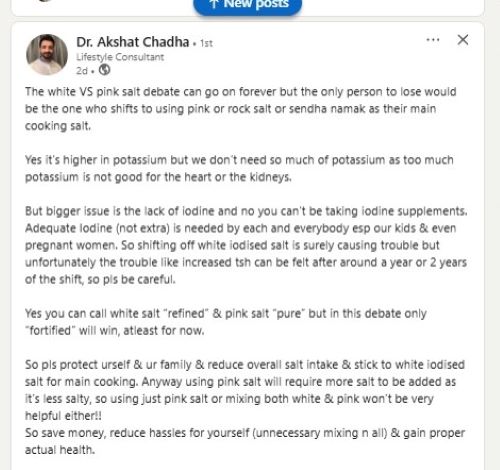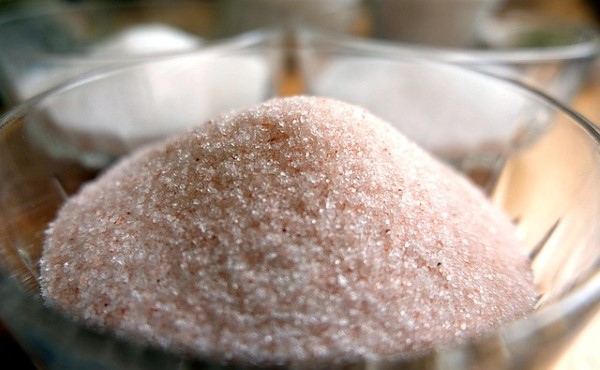The Pink Salt Trend: Is It Really Healthier?
In recent years, pink salt, Himalayan salt, and sendha namak have become buzzwords in the world of wellness. Influencers and health enthusiasts often hail them as “pure,” “natural,” and “superior” to regular white salt. But is this switch truly beneficial for your health?
According to Dr. Akshat Chadha, Lifestyle Consultant, making pink salt or sendha namak your main cooking salt may not be a smart choice — especially when it comes to iodine and potassium balance in the body.

Iodine: The Missing Nutrient in Pink Salt
One of the most important nutrients in white iodised salt is iodine — an essential mineral your body cannot produce on its own. Iodine is critical for thyroid function, brain development, and metabolic regulation.
According to the World Health Organization (WHO), iodine deficiency remains one of the leading causes of preventable mental disabilities in children worldwide.
Pink salt and sendha namak lack iodine, which puts individuals — especially pregnant women, children, and adolescents — at high risk of deficiency-related disorders such as:
- Goitre (thyroid swelling)
- Hypothyroidism
- Developmental delays in children
- Fatigue and cognitive decline
Switching completely to pink salt may lead to subtle but serious health impacts over time. Dr. Chadha warns that the effects of iodine deficiency might not appear immediately but could manifest after 1–2 years of regular use.
Also Read: Know All About Iodine: Functions, Recommended Amount, Sources, Deficiency,
Potassium in Sendha Namak: Too Much of a Good Thing?
Yes, pink salt is rich in potassium — but that’s not always a good thing. Excess potassium can be harmful for people with heart conditions, kidney issues, or those on certain medications.
Too much potassium may lead to:
- Hyperkalemia (high potassium levels in blood)
- Irregular heartbeats
- Muscle fatigue
- Kidney stress
Your body needs potassium, but only in the right amounts — and not from excessive salt intake.
Why White Iodised Salt Remains the Best for Daily Use
White iodised salt is not “refined and bad” as some wellness trends suggest. In fact, fortification with iodine has been one of the most successful global health interventions.
In India, where iodine deficiency is still a public health concern in certain regions, iodised salt plays a lifesaving role. The Food Safety and Standards Authority of India (FSSAI) mandates the use of iodised salt to prevent Iodine Deficiency Disorders (IDDs).
Moreover:
- White salt is more regulated for nutrient content
- It’s less expensive and readily available
- It prevents serious health issues related to iodine deficiency
Also Read: Salt is Necessary and Healthy: Know the Side Effects of Low Salt Diet
What About Mixing Both Salts, Pink Salt and White Salt?
Many people try to balance things out by mixing pink and white salt, but this may not be effective either. The dilution of iodine content defeats the purpose of fortification. Plus, since pink salt is less salty in taste, you may end up using more of it — adding to your sodium intake.
Expert Recommendation: Stick to White Iodised Salt
Dr. Akshat Chadha advises:
“Use pink salt occasionally for flavour or in certain recipes, but for main cooking, always stick to white iodised salt. It’s not about purity or colour — it’s about nutrients that your body needs daily.”
Final Takeaway on Sendha Namak Vs White Salt
Trendy doesn’t always mean healthy. While pink salt may look exotic and seem healthier, it lacks one crucial ingredient — iodine — without which your body cannot function optimally. Unless you’re medically advised otherwise, white iodised salt remains the best choice for everyday use.
Read more expert health insights at HealthViews India.





